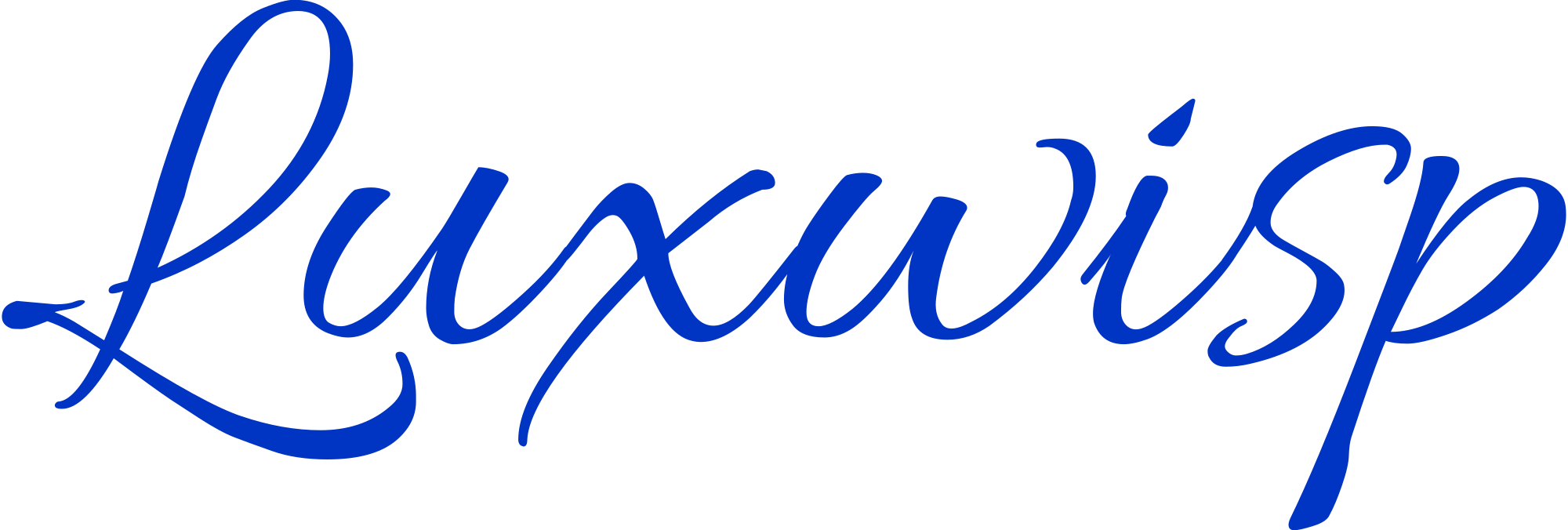The pros of MyPlate are it offers a simple visual guide for balanced meals, promoting good dietary habits. Additionally, it allows for flexibility, accommodating diverse ages, weights, and activity levels.
The cons of MyPlate are it fails to specify portion sizes, complicating its application for precise nutritional planning. Furthermore, it might oversimplify nutrition, neglecting the complexity of dietary needs and preferences.
Takeaways:
- MyPlate emphasizes half the plate with fruits and vegetables, promoting a balanced diet.
- It simplifies nutritional guidelines, making them more accessible to the public.
- Criticisms include a lack of clear portion sizes and oversimplification of nutrition.
- Alternatives like the Mediterranean diet focus on diet quality and diversity, contrasting MyPlate’s broader guidelines.
| Pros of Myplate | Cons of Myplate |
|---|---|
| Simplicity and Clarity | Lacks Specifics on Portion Sizes |
| Customizable to Individual Needs | Oversimplifies Complex Nutrition |
| Promotion of Fruits and Vegetables | Not Tailored to All Dietary Needs |
| Encourages Whole Grains | Dairy Emphasis May Not Fit All |
| Supports Portion Control | May Not Address Modern Dietary Trends |
| Educational Tool | Potential for Misinterpretation |
| Incorporates Dairy | Neglects Hydration |
| Accessible and Free Resource | Limited Guidance on Healthy Fats |
| Reflects Dietary Guidelines | Can Be Perceived as Too General |
| Versatile for Different Diets | Does Not Address Processed Foods |
Pros of MyPlate
- Simplicity and Clarity: MyPlate offers a straightforward visual guide, making it easy for people of all ages to understand the basics of a balanced diet. The division into four food groups plus a side of dairy simplifies the process of meal planning. It eliminates the need for counting calories or measuring portions meticulously, encouraging more people to adopt healthier eating habits.
- Customizable to Individual Needs: The flexibility of MyPlate allows for adjustments based on individual dietary requirements. Whether you are an athlete needing more protein or someone who is lactose intolerant and requires alternative sources of calcium, MyPlate’s structure supports personalization. This adaptability ensures that diverse nutritional needs and preferences can be met with ease.
- Promotion of Fruits and Vegetables: By designating half the plate to fruits and vegetables, MyPlate emphasizes the importance of these food groups for a healthy diet. This focus helps to increase the intake of essential vitamins, minerals, and fiber. It aligns with numerous studies that highlight the benefits of fruits and vegetables in reducing the risk of chronic diseases.
- Encourages Whole Grains: MyPlate advises making at least half of your grains whole grains, which promotes the consumption of healthier grain options. Whole grains are linked to a lower risk of heart disease, diabetes, and other health issues. This guidance helps individuals make smarter carbohydrate choices.
- Supports Portion Control: Although criticized for not specifying portion sizes, the visual representation inherently encourages portion control by dividing the plate into sections. This method can help people visualize and limit how much they eat without the need for precise measurements, aiding in weight management.
- Educational Tool: MyPlate serves as an excellent educational tool in schools and public health campaigns. Its simplicity makes it accessible to children, helping instill healthy eating habits from a young age. Educators can use it as a base for teaching nutrition basics, fostering a generation that is more aware of dietary balance.
- Incorporates Dairy: Including dairy or a dairy substitute provides a source of calcium and vitamin D, nutrients essential for bone health. This aspect of MyPlate ensures that people remember to include these important nutrients in their daily diet, which might otherwise be overlooked.
- Accessible and Free Resource: MyPlate is available for free online, making it accessible to a wide audience. Its resources, including detailed guidelines and tips for each food group, are readily available to anyone with internet access, removing barriers to nutritional information.
- Reflects Dietary Guidelines: MyPlate is based on the Dietary Guidelines for Americans, ensuring it reflects current nutritional science and recommendations. This basis in scientific research adds credibility and reliability to the guidance it provides.
- Versatile for Different Diets: Despite its basic structure, MyPlate can be adapted to fit various dietary patterns, including vegetarian and vegan diets. By substituting animal-based proteins and dairy with plant-based alternatives, individuals can still follow MyPlate’s principles while adhering to their dietary restrictions or preferences.
Cons of MyPlate
- Lacks Specifics on Portion Sizes: The absence of explicit portion sizes in MyPlate’s visual guide can lead to confusion. Without precise measurements, individuals may struggle to determine the correct amounts of food they should consume, potentially leading to overeating or inadequate nutrition.
- Oversimplifies Complex Nutrition: By focusing on food groups without delving into the nuances of nutrient density or the quality of food within each group, MyPlate may oversimplify nutritional needs. This approach might neglect the importance of selecting whole, unprocessed foods over their refined counterparts.
- Not Tailored to All Dietary Needs: While MyPlate offers a general framework, it might not suit everyone’s specific health conditions or dietary restrictions. People with certain medical conditions, like diabetes or heart disease, may require more tailored dietary advice that takes into account carbohydrate counting or sodium intake.
- Dairy Emphasis May Not Fit All: The inclusion of a dairy section might not align with the dietary habits of lactose intolerant individuals or those following a vegan lifestyle. This emphasis on dairy could inadvertently suggest that it’s indispensable for a healthy diet, overlooking the variety of calcium-rich, non-dairy alternatives available.
- May Not Address Modern Dietary Trends: As dietary trends evolve, MyPlate may not fully encapsulate the nuances of modern diets, such as keto, paleo, or intermittent fasting. These diets focus on specific macronutrient distributions that don’t necessarily fit within the MyPlate framework.
- Potential for Misinterpretation: The simplicity of MyPlate, while a strength, can also be a drawback. Individuals might misinterpret the visual guide as an endorsement of all foods within a group as equal, not recognizing the need for lean proteins over fatty ones or whole fruits over juices.
- Neglects Hydration: MyPlate does not explicitly include guidance on hydration, an essential aspect of overall health. Water intake is crucial for bodily functions, yet the model does not address this, potentially overlooking a key component of nutritional well-being.
- Limited Guidance on Healthy Fats: MyPlate does not have a specific section for fats, which are an important part of a balanced diet. Healthy fats, such as those from avocados, nuts, and seeds, are essential for brain health and energy, but their absence in the model could imply they are of lesser importance.
- Can Be Perceived as Too General: For individuals seeking detailed nutritional guidance, MyPlate may appear too generic. It provides a broad overview rather than detailed advice on how to balance macronutrients or manage specific dietary goals, such as muscle gain or fat loss.
- Does Not Address Processed Foods: While MyPlate promotes a balance of food groups, it does not explicitly discourage the consumption of processed foods. This omission might lead individuals to assume that processed foods can be a significant part of a healthy diet if they fit into the MyPlate categories, potentially undermining nutritional quality.
MyPlate Overview
Introduced in 2011 by Michelle Obama and Tom Vilsack, MyPlate serves as a visual guide designed to help individuals create more balanced and proportionate meals by dividing a plate into four key food groups: Vegetables, Proteins, Grains, Fruits, with a side of Dairy. This initiative was developed to replace the older food pyramid model, aiming to offer a more intuitive and straightforward approach towards healthy eating. By visually segmenting the plate, MyPlate encourages the consumption of a variety of foods while emphasizing the importance of portion control.
Central to the MyPlate model is the recommendation to fill half the plate with fruits and vegetables, thereby promoting a diet rich in essential nutrients and fiber. This approach aligns with the 2010 Dietary Guidelines, which underscore the significance of incorporating a wide range of food types into one’s diet to achieve nutritional balance. Additionally, MyPlate provides ten practical tips to aid individuals in constructing a well-rounded plate, further simplifying the process of meal planning and preparation. This model aims to demystify nutritional guidelines, making it more accessible and easier for the general public to adopt healthier eating habits.
Pros of MyPlate

Emphasizing half the plate to be filled with fruits and vegetables, MyPlate offers a balanced dietary approach that simplifies nutritional guidelines for the public. By dividing the plate into sections that represent the five food groups, it visually communicates the importance of proportion and variety in a healthy diet. This straightforward representation makes it accessible and easy to understand for individuals across all ages and educational backgrounds, thereby promoting better dietary choices among a wide audience.
Furthermore, MyPlate’s design inherently encourages flexibility in meal planning. It allows for personal adjustments according to dietary needs and preferences without compromising nutritional value. This adaptability ensures that it can serve as a guide for a diverse population with varying health requirements and cultural food practices.
The inclusion of a dairy section highlights the importance of calcium and vitamin D in the diet, advocating for a well-rounded meal plan that supports bone health. By promoting variety and balance, MyPlate not only simplifies the complex subject of nutrition but also encourages a holistic approach to eating that can lead to improved health outcomes. Its easy-to-understand visual aid serves as a practical tool in the pursuit of a healthier lifestyle.
Cons of MyPlate

While MyPlate offers a visually engaging guide to balanced eating, it falls short in providing precise guidance on portion sizes, potentially leading to overconsumption. This aspect is crucial as understanding the right amounts of food is essential for maintaining a healthy diet and preventing weight gain.
Beyond portion control, there are several other areas where MyPlate could improve to offer a more comprehensive nutritional guide.
- Lacks clear guidance on portion sizes: This can lead to potential overeating as individuals might not know how much of each food group they should consume.
- Focuses more on nutrient density than overall dietary quality: Neglecting other important aspects of nutrition that contribute to a balanced diet.
- Does not consider individual nutritional needs: Making it less personalized for people with specific dietary requirements or health conditions.
- Oversimplifies the complexity of nutrition: This can lead to misconceptions about what constitutes balanced eating, potentially misinforming individuals.
- Does not address fat and sugar intake adequately: Both are essential in maintaining a healthy diet, yet MyPlate provides limited guidance on managing these components effectively.
Myplate Vs. Food Pyramid

Moving beyond the limitations of MyPlate, it is essential to compare it with its predecessor, the Food Pyramid, to understand the evolution of dietary guidelines. MyPlate offers a simplified approach to achieving a balanced diet, a significant shift from the more complex structure of the Food Pyramid. By dividing the plate into four distinct sections, MyPlate is more accessible and easier to understand than the Food Pyramid, which was organized into five food groups. This simplification helps individuals make healthier food choices without the need for measuring servings or adhering to a stringent structure.
Moreover, MyPlate is inclusive of various dietary preferences as it does not mandate meat consumption, unlike the Food Pyramid. This flexibility caters to vegetarians, vegans, and other dietary restrictions, promoting a more universal application of the guidelines. Additionally, the Food Pyramid’s heavy emphasis on carbohydrates, placing them at the base, has been criticized for not aligning with an ideal nutritional balance.
MyPlate addresses this concern by allocating half of the plate to fruits and vegetables, emphasizing their importance in a nutritious diet. This shift from specific daily servings to a focus on proportions and balance underlines the evolution from the Food Pyramid to MyPlate, marking a significant step forward in public dietary guidance.
Criticisms of MyPlate

Despite its advancements in dietary guidance, MyPlate has faced criticism for its lack of specificity and oversimplification of nutritional complexities. While striving to offer a more intuitive approach to healthy eating than its predecessor, the Food Pyramid, MyPlate has encountered several critiques concerning its approach to nutrition education and guidance. Critics have pointed out significant areas where MyPlate falls short, impacting its effectiveness as a tool for fostering healthy eating habits among diverse populations.
Key criticisms include:
- Lack of Specificity: MyPlate does not cater to the unique nutritional needs of different populations, such as pregnant women, the elderly, or athletes, potentially leading to inadequate dietary recommendations for these groups.
- Oversimplification: By focusing primarily on food groups, MyPlate may overlook the nuances of dietary quality, such as the benefits of whole foods over processed options.
- Portion Control: There is a notable absence of clear portion size guidance, which is crucial for managing calorie intake.
- Fat and Sugar Intake: MyPlate does not sufficiently emphasize the importance of limiting unhealthy fats and added sugars in a balanced diet.
- Generalization of Food Groups: The broad categorization of foods can overlook individual dietary preferences and health conditions, such as food allergies or intolerances.
Alternatives to MyPlate

In response to the limitations of MyPlate, several dietary approaches have emerged as viable alternatives, each offering unique nutritional philosophies and benefits. The Mediterranean diet, for instance, emphasizes plant-based foods, healthy fats like olive oil, and moderate protein intake from fish and poultry, presenting a distinct contrast to MyPlate’s broader guidelines. It underscores the importance of diet quality and diversity without strict food group allocations.
Similarly, the DASH diet, which stands for Dietary Approaches to Stop Hypertension, zeroes in on reducing sodium intake and promoting heart-healthy eating patterns. This specific focus diverges from MyPlate’s general nutritional advice, offering a targeted approach for individuals concerned with blood pressure and cardiovascular health.
The rise of plant-based and Paleo diets further illustrates the search for MyPlate alternatives. A plant-based diet excludes all animal products, focusing on fruits, vegetables, whole grains, and legumes, thereby diverging significantly from MyPlate’s inclusion of dairy and meat. The Paleo diet advocates for whole, unprocessed foods, excluding dairy and grains, which MyPlate recommends, and emphasizes lean meats, fish, fruits, and vegetables.
Lastly, the Flexitarian diet introduces a middle ground by primarily advocating for plant-based foods while allowing for occasional meat consumption. This approach offers flexibility not present in the MyPlate model, catering to those seeking a less rigid dietary framework.
Choosing the Right Dietary Approach

Selecting the appropriate dietary approach is critical for meeting personal nutrition goals and accommodating dietary restrictions. It involves a careful consideration of variety and balance to ensure that all nutritional needs are met.
This choice must be informed by both individual health objectives and the constraints posed by dietary restrictions to achieve optimal health outcomes.
Personal Nutrition Goals
Choosing the right dietary approach is crucial for achieving personal nutrition goals and requires careful consideration of individual health objectives. It’s vital to tailor your diet to meet your specific needs, preferences, and lifestyle to ensure long-term success and optimal health. To navigate this process effectively, consider the following strategies:
- Consult with healthcare professionals to align your diet with your individual needs and preferences.
- Assess cultural and regional influences to incorporate traditional foods into your dietary plan.
- Evaluate dietary restrictions and preferences to ensure your chosen approach is sustainable and enjoyable.
- Experiment with different dietary approaches to find the best fit for your health and wellness journey.
- Consider personal health goals when choosing a dietary approach for optimal nutrition.
Dietary Restrictions Consideration
Evaluating individual dietary restrictions plays a crucial role in tailoring a nutrition plan that aligns with one’s health objectives and lifestyle. When choosing a dietary approach, it’s essential to consider personal health goals, cultural influences, and existing dietary restrictions.
Consulting with healthcare professionals can provide invaluable guidance on developing tailored nutrition plans that accommodate these factors. Moreover, assessing how specific health conditions and dietary restrictions impact food choices and meal planning is critical.
Experimenting with different dietary approaches, while taking into account individual dietary preferences, restrictions, and regional influences, helps in finding the most suitable diet. This process ensures the selected dietary strategy not only supports health and wellness but also respects personal and cultural dietary practices.
Variety and Balance
After considering individual dietary restrictions, it becomes imperative to focus on incorporating a variety of foods and achieving balance to ensure the dietary approach chosen meets all nutritional needs and supports overall health. Opting for a diverse and balanced diet is crucial for long-term wellness and can be enhanced by:
- Consulting with healthcare professionals to tailor a diet that aligns with personal health goals.
- Considering cultural and regional influences to make dietary choices that are culturally sensitive and sustainable.
- Experimenting with different dietary approaches to find what best suits individual needs and preferences.
- Tailoring nutrition education to individual needs to improve engagement and success rates.
- Evaluating dietary restrictions and preferences to select an approach that is both enjoyable and conducive to a healthy lifestyle.
Conclusion
In conclusion, while MyPlate offers a simplified and visually engaging approach to meal planning that accommodates a broad audience, it is not without its limitations.
The model’s emphasis on balance and flexibility must be weighed against its shortcomings in providing detailed guidance on portion sizes, addressing individual nutritional requirements, and adequately managing fat and sugar intake.
As dietary needs vary significantly among individuals, exploring alternatives and considering personalized advice from nutrition professionals is advisable for optimal dietary planning.













